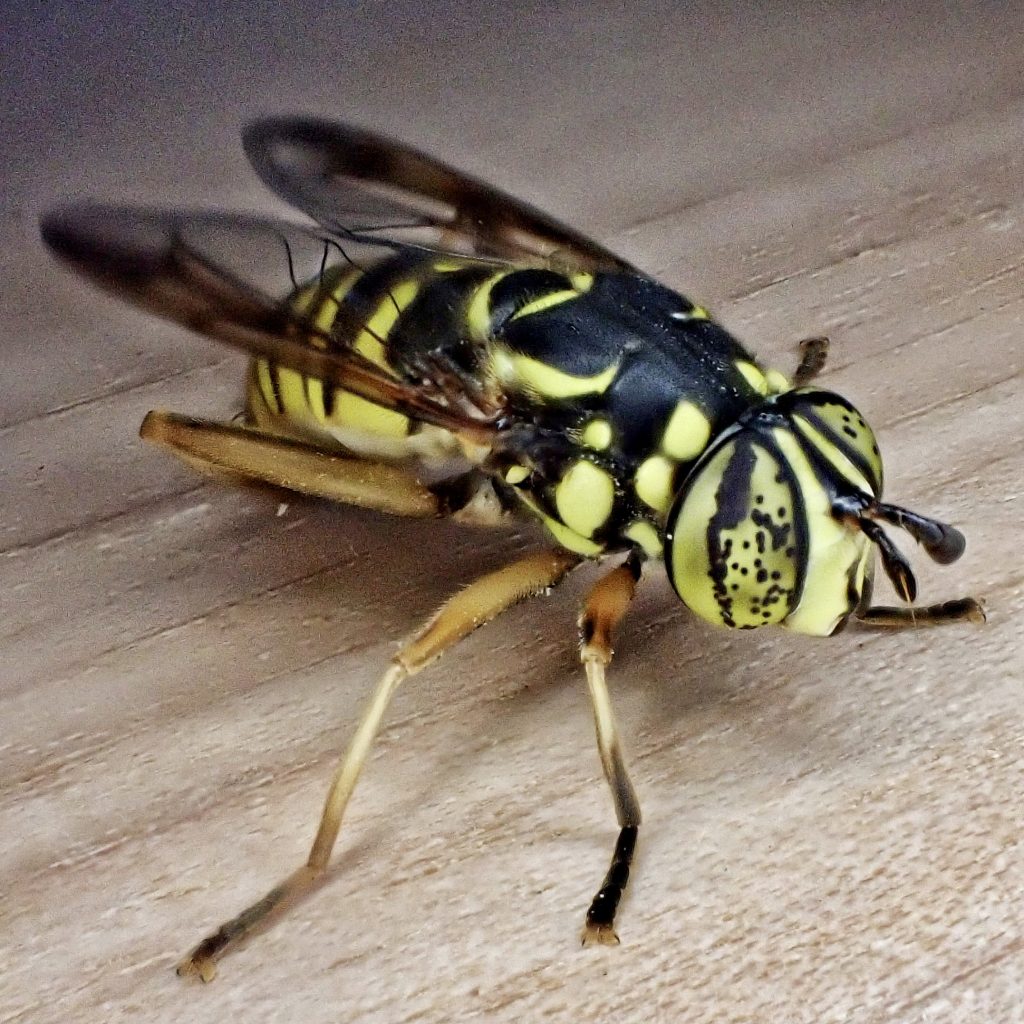
On our recent trip recent trip into the Cascades I indulged in a bit of photography gluttony and used up my two batteries well before the trip was over. I have since purchased 2 additional batteries and a car charger for them, although the massive amount of time I had to spend editing and ordering those photos will hopefully act as a deterrent to such future overindulgence.
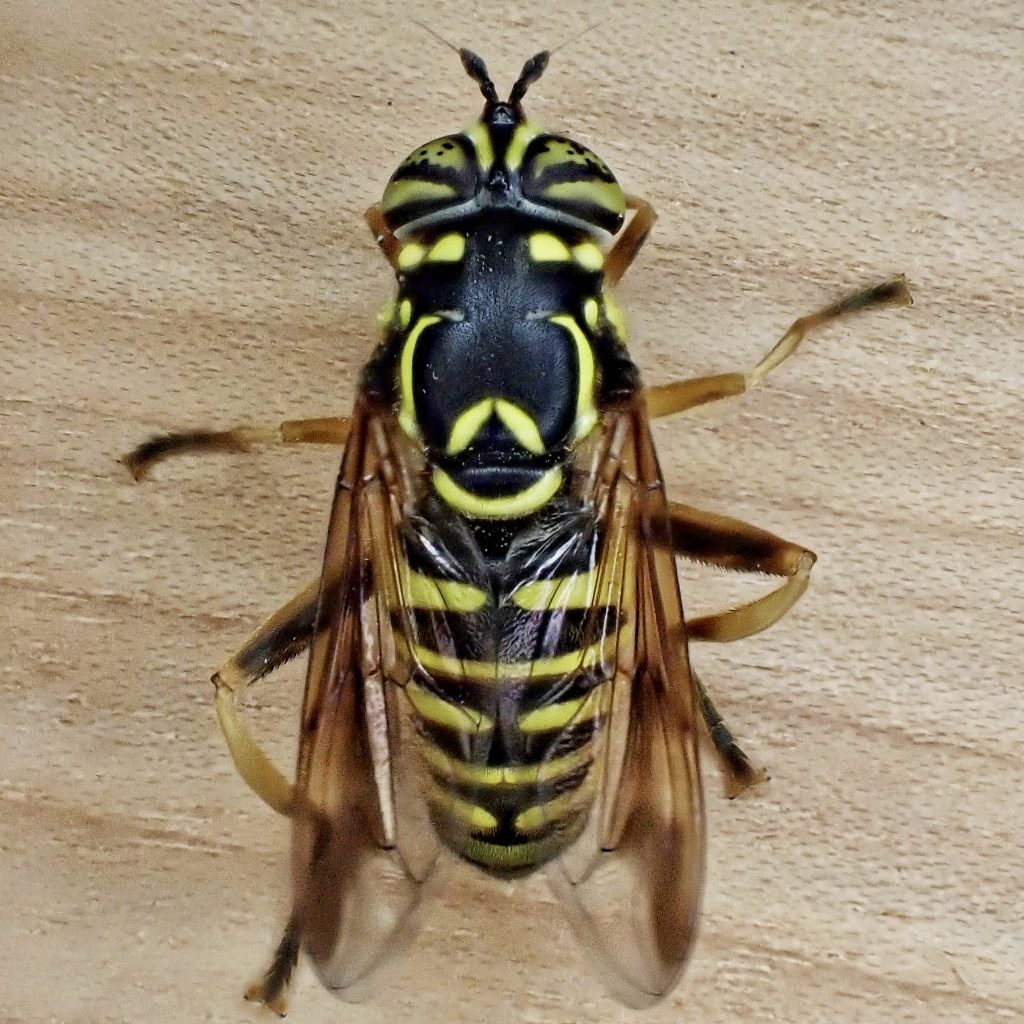
The reason I mention this in this profile is that my usual protocol is to photograph an insect in situ, and then attempt to capture it for positive identification. But without a camera I just end up trying to net any bug I see, and I seldom take the time to examine it much before I swing. Which is what happened with this Spilomyia interrupta. I had a vague impressionof a yellowjacket on a valerian, which only grew stronger with its angry buzzing as I carefully maneuvered it into a container. Only then did I notice the antenna and realize that it was a syrphid fly.
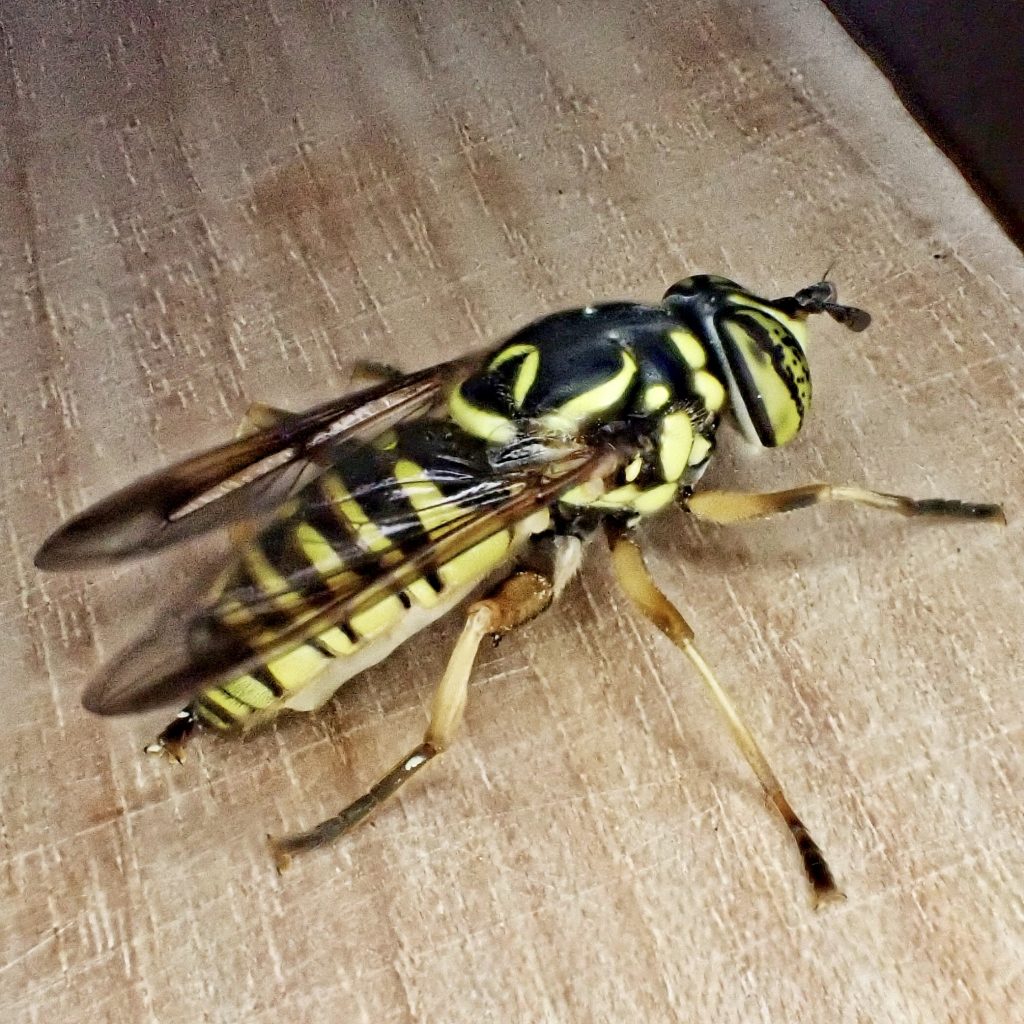
Spilomyia in general are called hornet flies because of their precise Batesian mimicry of members of Vespidae. Not only do they have yellow markings that imitate those of hornets, they also have front legs that are colored the same as a vespid’s antenna, and they often wave those front legs when perched, in a manner that simulates the antennal motions of a hornet. And their eyes are even pigmented in a pattern that disguises their large rounded fly eyes and suggests the long, narrow oval eye of a wasp, which is often bordered in yellow in species of Vespula.
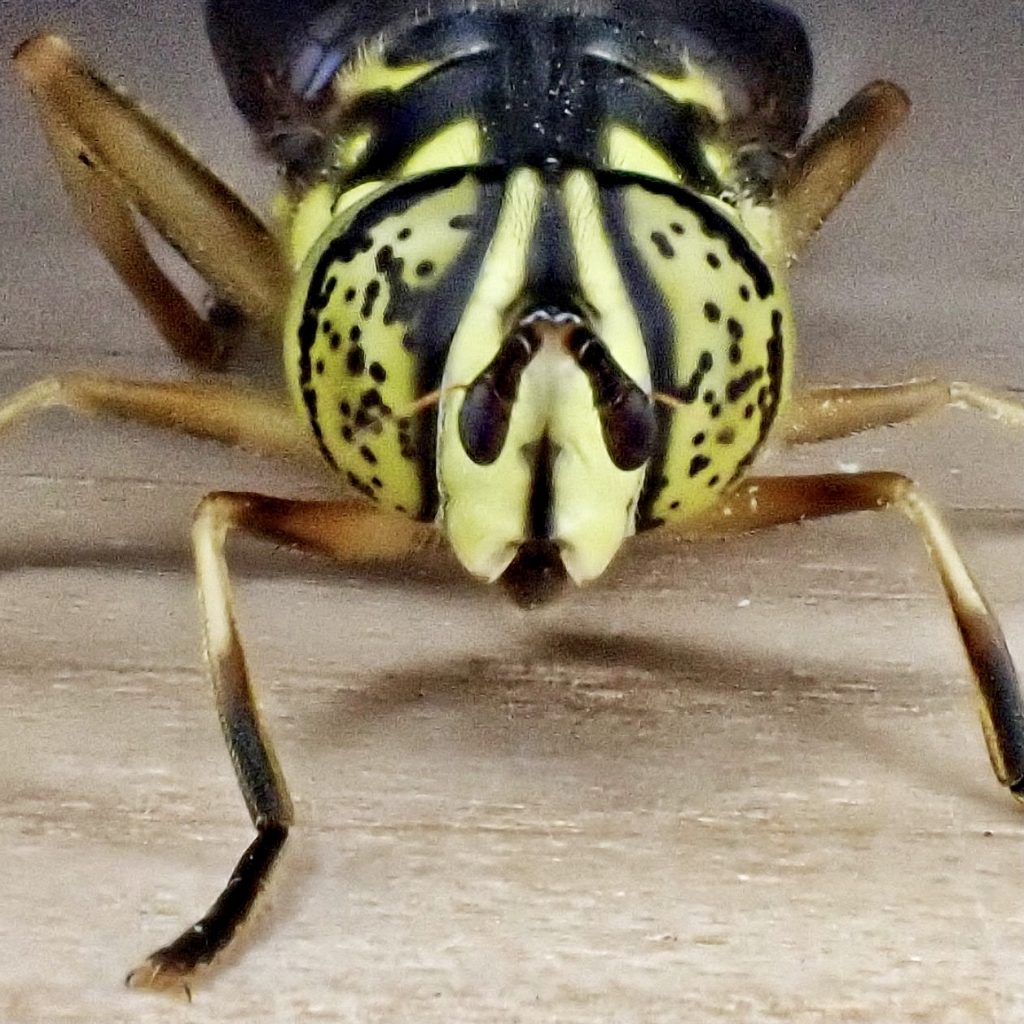
I find Syrphid flies in general to be very cool and compelling bugs. They were my entry point into the world of Diptera 3 years ago, and a fascination with flies has grown because of them. But I have to say that my love of this Spilomyia interrupta has eclipsed all previous infatuations with any flower fly. I mean, those incredible eyes alone fill me with something akin to awe! I am really looking forward to finding more of these bugs, as well as their associated hornet mimics in the genus Spilomyia.
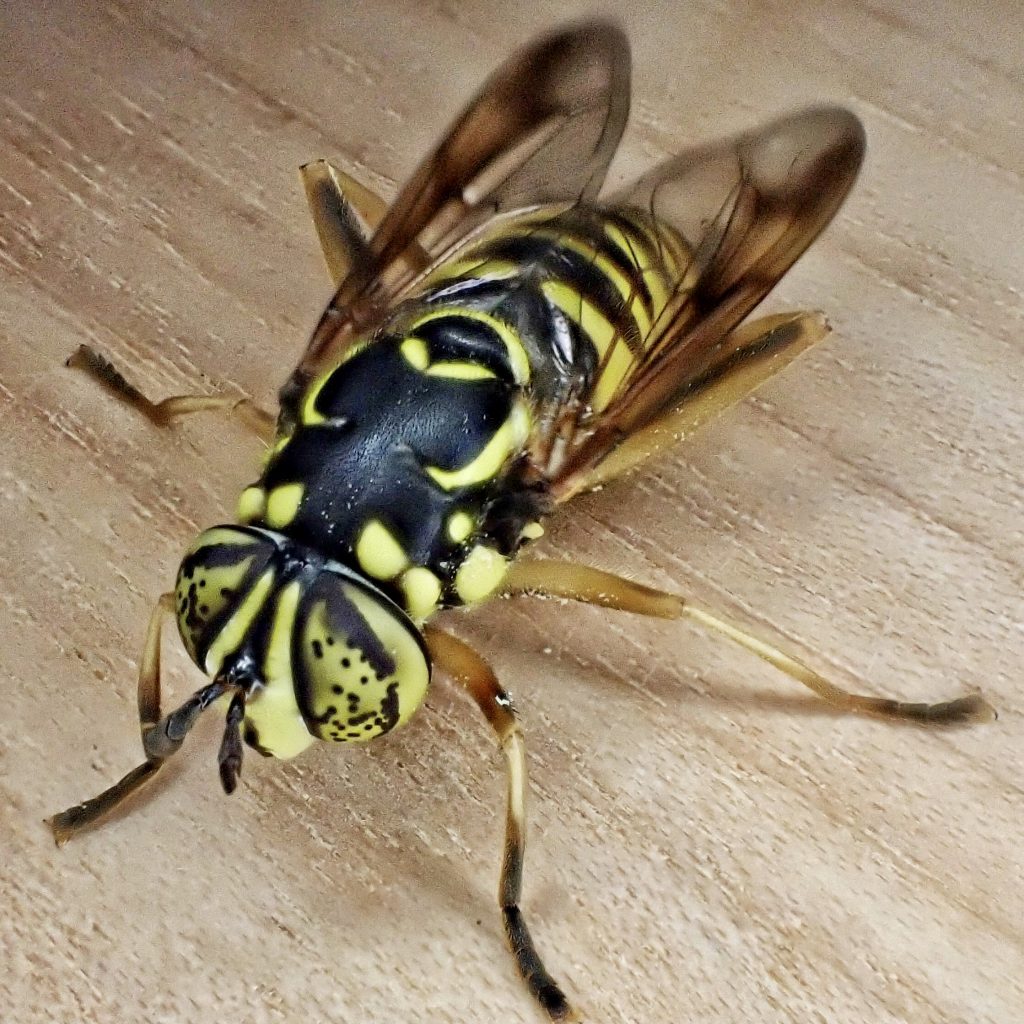
Description-Medium sized (11-15mm in length) syrphid fly with yellow markings on a black body, which strongly resembles a yellowjacket; pronotum with an inverted v, lateral border, and spots near the front; scutellum bordered behind; abdomen with transverse bands, the 1st, 3rd, and 5th of which are broken in the center with a significant gap; eyes yellow with black longitudinal lines and black speckling.
Similar species–S. citima has a narrower break in the 1st, 3rd, and 5th yellow abdominal lines; S. foxleei has a much more concave face.
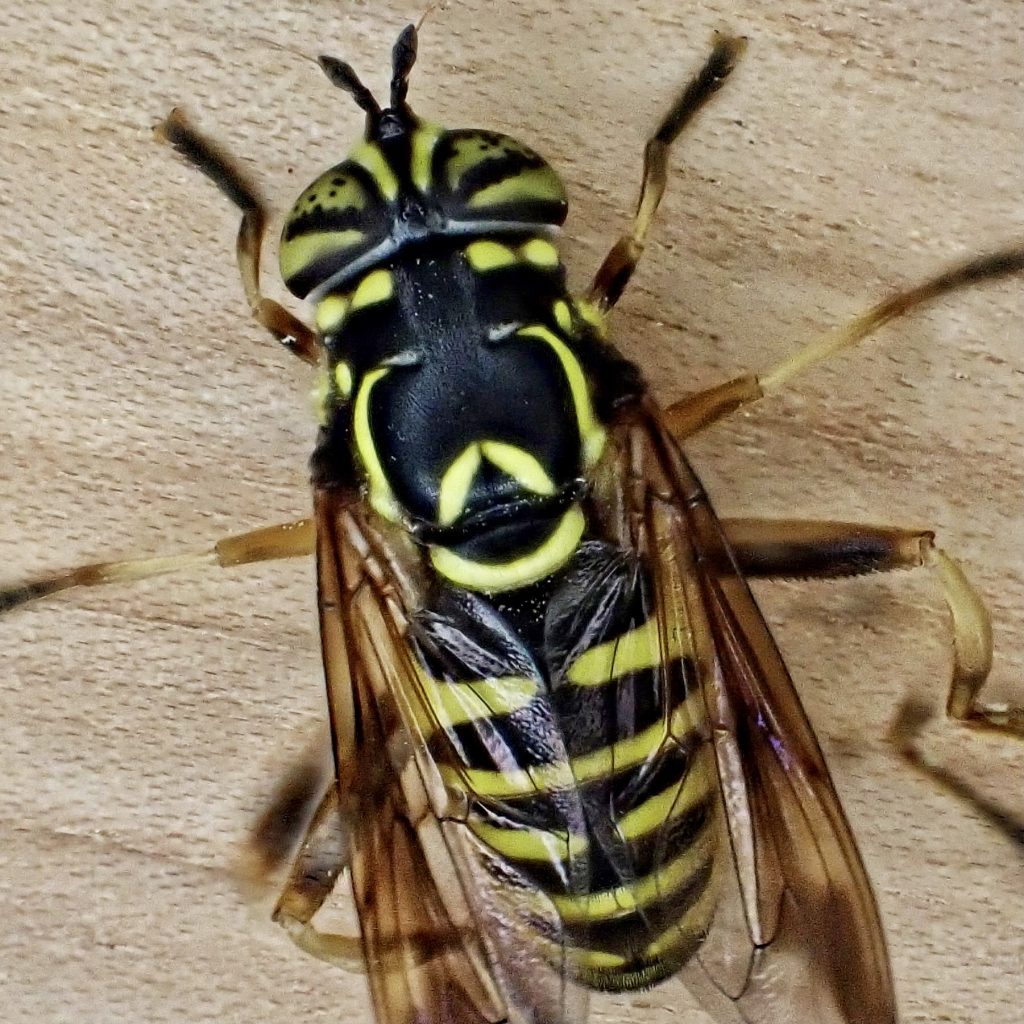
Habitat– Larvae found in cavities and rot holes of dead and dying deciduous trees, and adults found at flowers in mixed forests and deciduous woodlands.
Range-Western North America; primarily west of the Cascades and in se Idaho in our region.
Eats– Larvae feed on rotting wood and other decaying organic material; adults feed on nectar and pollen.
Eaten by-Larvae are preyed upon by woodpeckers and insectivores that can reach their den, and are probably parasitized by some wasps and tachinid flies, though I can find no information regarding that; adults are preyed upon by insectivores not fooled by their mimicry.
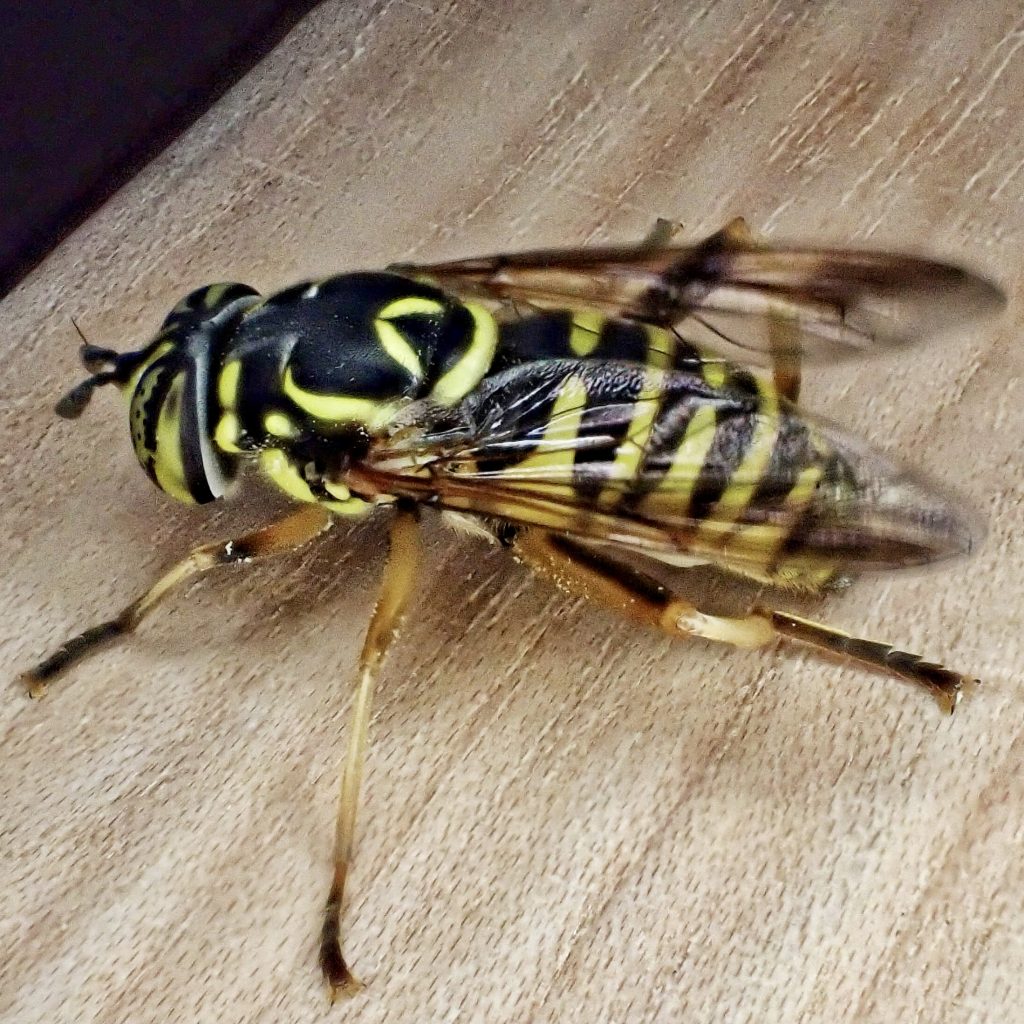
Reproduction– Eggs are laid in rotting wood in holes in the heartwood of trees; overwinters as pupa.
Adults active-June to October
Etymology of names–Spilomyia is from the Greek for ‘spot/fleck’ and probably references the pigmentation of the eyes. The specific epithet interrupta is Latin for ‘broken apart’, and probably refers to the central breaks in the first, third, and fifth yellow abdominal bands.

https://repository.si.edu/bitstream/handle/10088/17084/ent_FCT_73.pdf?sequence=1&isAllowed=y
http://www.phorid.net/flower_fly/hover_species_pages/spilomyia_interrupta.htm
https://bugguide.net/node/view/85002
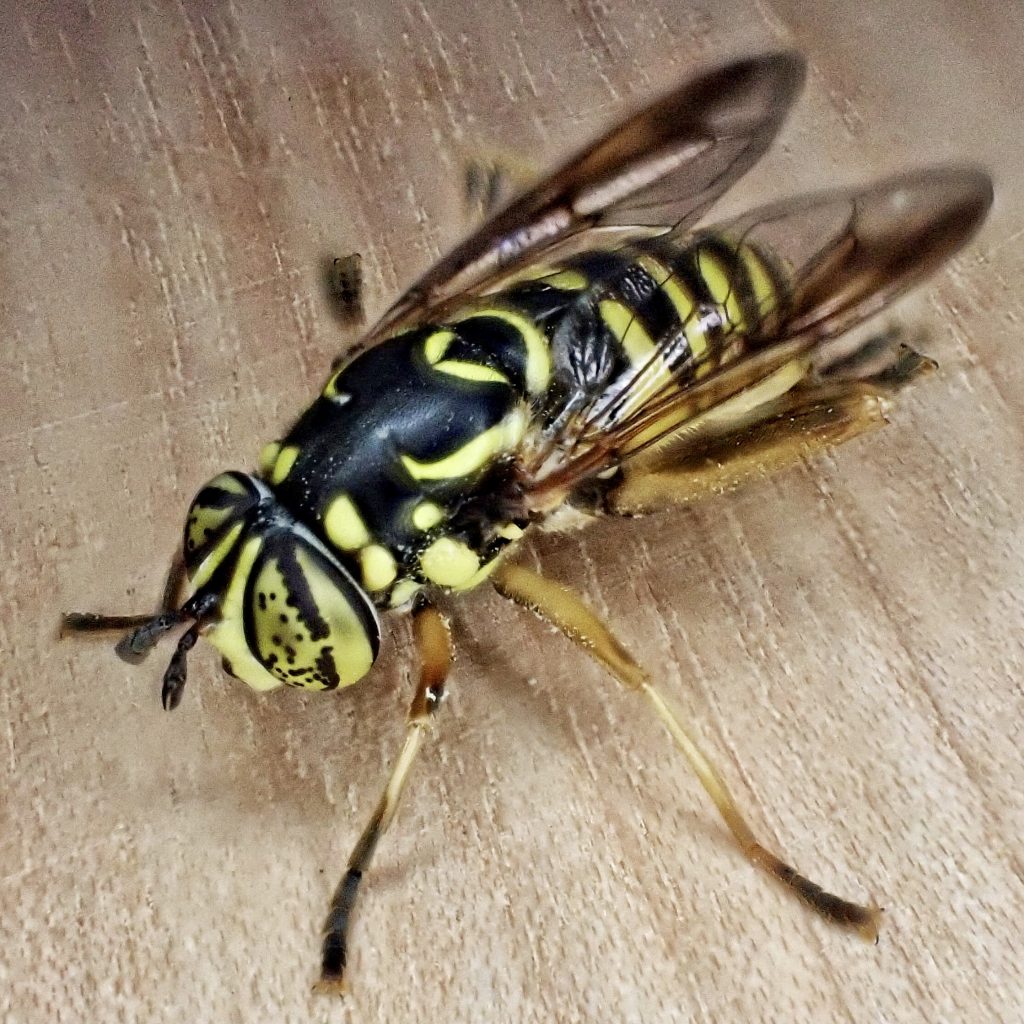
Terrific description. Thanks. I had I idea these existed.
Beautiful. And, so, I’m curious: are they biting / stinging?
No, they don’t sting or bite. Purely Batesian mimicry. Although they even simulate stinging to enhance the mimicry.